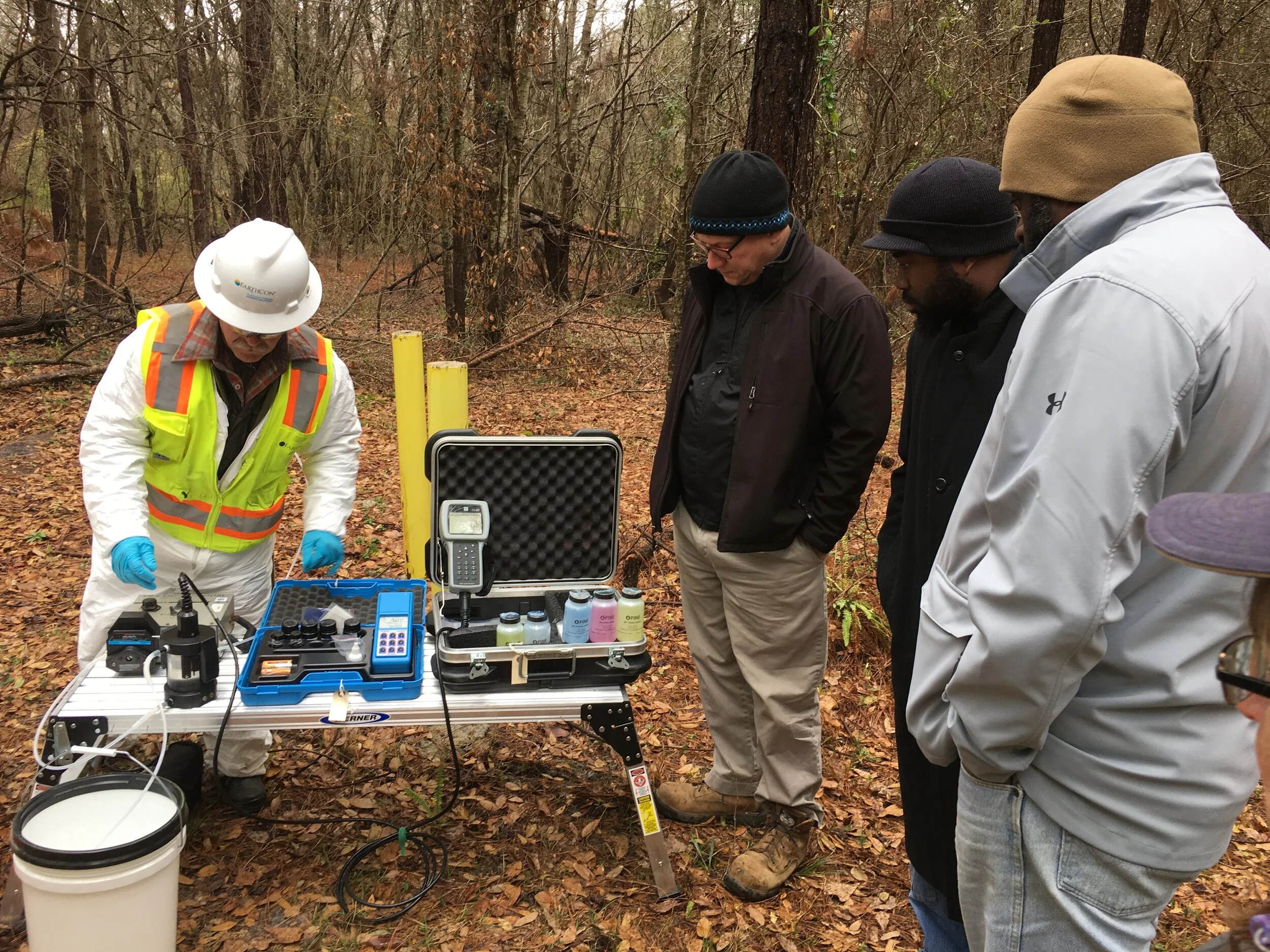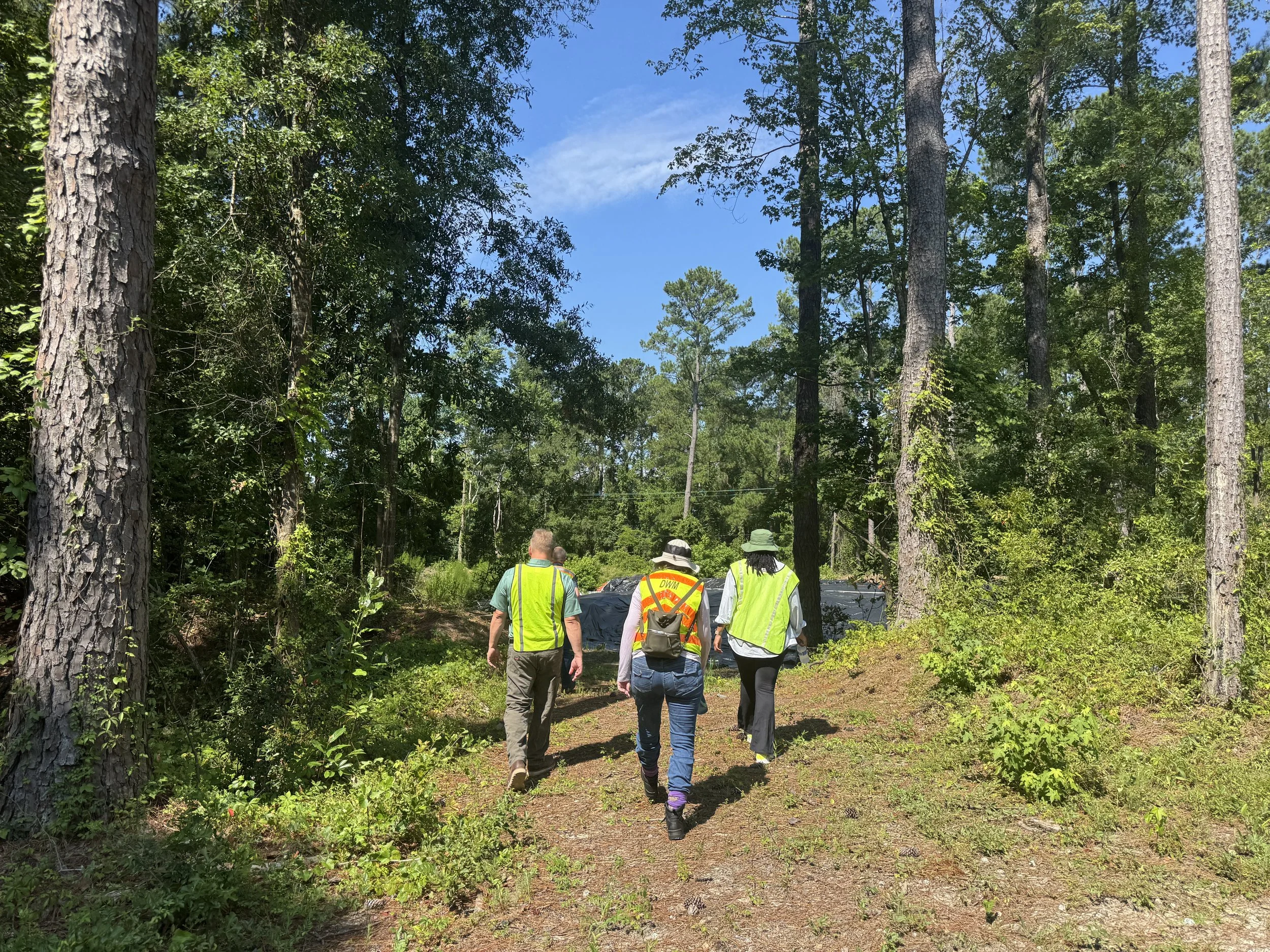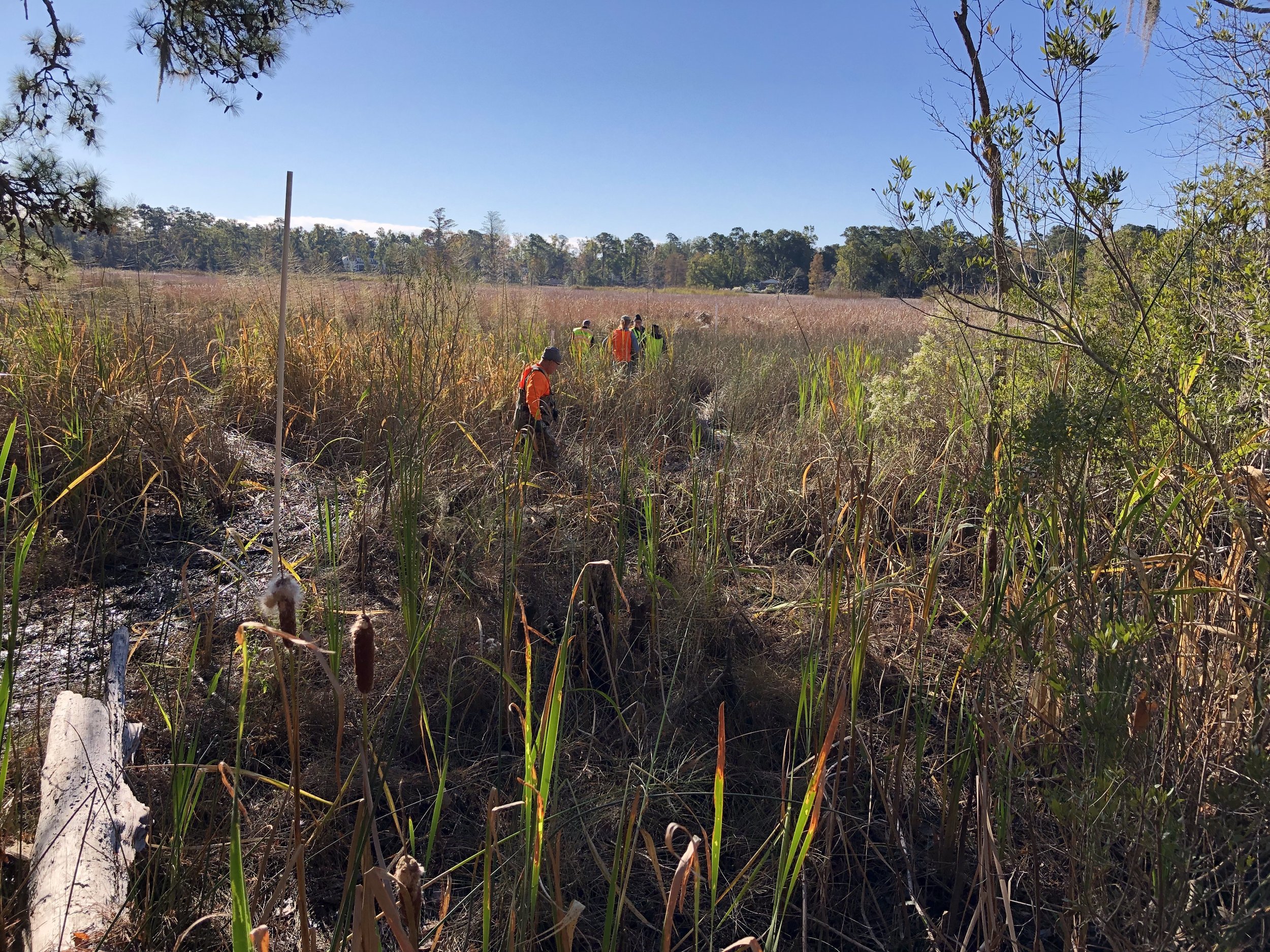About the Kerr-McGee Chemical Corp–Navassa Superfund Site
The Kerr-McGee Chemical Corp–Navassa Superfund Site (the Superfund site) was contaminated by nearly 40 years of creosote-based wood treating operations.
In 2010, the contamination in groundwater, soils, and sediments led the U.S. Environmental Protection Agency (EPA) to add the site to the National Priorities List (NPL) of federal Superfund sites. The NPL is the EPA list of the worst hazardous waste sites. The Superfund designation means the remediation must follow the Comprehensive Environmental Response, Compensation, and Liability Act (CERCLA) process that EPA uses to clean up Superfund sites. CERCLA is also known as Superfund.
The Multistate Environmental Response Trust (the Multistate Trust) is performing investigations and remediation of the Superfund site in Navassa under EPA oversight and in consultation with the North Carolina Department of Environmental Quality (NCDEQ).
Overview of Investigations and Remediation Planning and Progress

Milestones Achieved to Date
In 2011, the Multistate Trust accepted responsibility for owning and managing the Superfund site in Navassa as part of the Tronox bankruptcy settlement.
Since then, the Multistate Trust has completed numerous environmental investigations and actions, including:
Remedial Investigation (RI) and final report, August 2019
Human Health Risk Assessment (HHRA), April 2019
Human Health Risk Assessment (HHRA) Addendum, August 2019
Baseline Ecological Risk Assessment (BERA), February 2019
Redevelopment Planning Initiative, 2017–2018
Acquisition of two residential properties to facilitate Site remediation, 2016
In addition, EPA – with Multistate Trust support and in consultation with NCDEQ – has implemented the following:
Issuance of the Record of Decision (ROD) for Operable Unit 2, September 2022
Completion of the Proposed Plan for Operable Unit 2, May 2022
Issuance of the Record of Decision (ROD) for Operable Unit 1, April 2021
Completion of the Proposed Plan for Operable Unit 1, January 2021
Find all administrative records published by EPA for the site at EPA Administrative Records.
Visit the EPA website for Navassa at https://www.epa.gov/superfund/kerr-mcgee-chemical-corp.
A Multistate Trust contractor performs fence line maintenance in Navassa in October 2018.
Current Activities and Work
EPA signed the Record of Decision (ROD) for Operable Unit 2 (OU2) in September 2022. The selected remedy includes the excavation of soil with on-Site reuse/consolidation and off-Site disposal. Since March 2024, the Multistate Trust has been excavating surface soils at OU2. See the Operable Unit 2 Remedial Action Fact Sheet and the OU2 Transportation and Disposal Plan Fact Sheet for more information.
The Multistate Trust has also been collecting data from the Marsh (OU3) to understand if contamination poses a risk to plants and animals. The data will help support future remediation decisions about the Marsh.
What is an Operable Unit?
During remediation, a Superfund site can be divided into a number of distinct areas, depending on the complexity of the problems associated with the site, according to the EPA Superfund glossary. These areas are called operable units (OUs). Dividing a site into OUs may address geographic areas of a site, specific site problems, or areas where specific actions are required.
Operable Unit 1, as defined in the OU1 Record of Decision, is outlined by the black, hatched line in the upper left.
Operable Unit 1
Operable Unit 1 (OU1) is located in the northern portion of the Superfund Site. OU1 consists of 20.2 acres that EPA concluded pose no current or potential threat to human health or the environment. In 2021, EPA deleted OU1 from the National Priorities List after issuing a Record of Decision determining no action is necessary in OU1 for unrestricted land use.
OU1 is located next to the 82-acre Eastern Upland Area, which means that a total of approximately 100 contiguous acres are available for reuse.
Operable Unit 2
Located immediately south of OU1, OU2 consists of ±15.6 acres of the former treated and untreated wood storage areas that require removal of contaminated surface soil. EPA issued a Record of Decision for OU2 remediation in September 2022. Remedial work began March 2024 and will allow OU2 to support unrestricted land use.
Investigations are underway at the other operable units at the Superfund Site.
Our Beneficiaries and Regulatory Agencies
In Navassa, the Multistate Trust is working in collaboration with its federal and state governmental beneficiaries for the Site:
the United States, which is represented by EPA and the U.S Department of Justice;
the State of North Carolina, which is represented by NCDEQ; and
the Navassa Trustee Council.
EPA is also the lead regulatory agency for the Site, and NCDEQ is the non-lead agency.
In EPA’s role as lead agency, EPA approves site-specific remediation plans and activities and the hiring of contractors to perform environmental activities at the Superfund site. In its role as beneficiary, EPA approves the Multistate Trust’s work plans and annual environmental budgets, in consultation with NCDEQ.
The sale, transfer, or disposition of any portion of the 154-acre Multistate Trust Property — which includes most of the Superfund site — must be approved by EPA and the Navassa Trustee Council.
The Navassa Trustee Council consists of representatives of:
NCDEQ;
the U.S. Department of the Interior, which is represented by the U.S. Fish & Wildlife Service (FWS); and
the U.S. Department of Commerce, which is represented by the National Oceanic and Atmospheric Administration (NOAA).
Our Commitment to Community Stakeholders
The Multistate Trust and its beneficiaries recognize that the Town of Navassa and residents near the Superfund site have been impacted by the site and related contamination.
The Multistate Trust team remains dedicated to protecting and engaging our neighbors and the community as we remediate the Site and plan for its safe, beneficial reuse. Learn more at Community Involvement.









